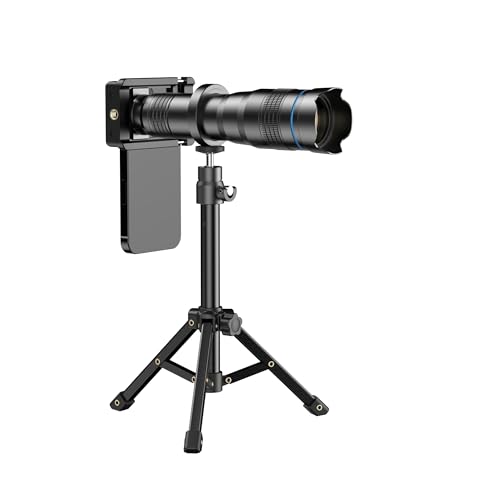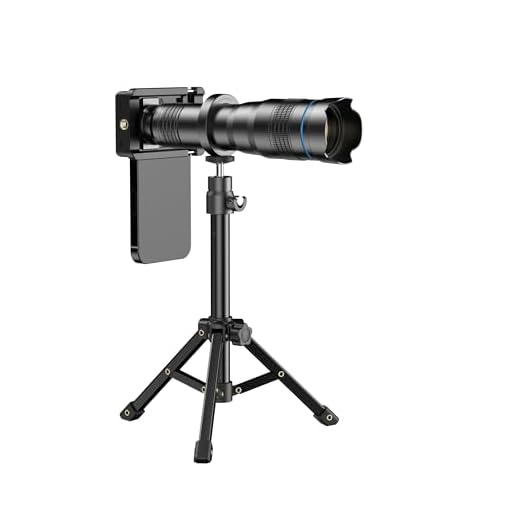




When it comes to digital photography, understanding lens magnification is crucial for capturing the perfect shot. The focal length of a camera lens determines how much the image will be magnified, allowing you to zoom in on distant subjects or capture a wider field of view.
So, how much do you multiply a digital camera lens by to achieve the desired magnification? The answer lies in the focal length of the lens. A lens with a shorter focal length provides a wider field of view and less magnification, while a longer focal length results in greater magnification and a narrower field of view.
Understanding the Basics
When it comes to digital camera lenses, one important concept to understand is the concept of focal length. Focal length is a measure of how strongly the lens converges or diverges light. In simple terms, it determines the field of view and magnification of the lens.
The focal length of a lens is typically expressed in millimeters (mm) and is a crucial factor in determining the angle of view and the magnification of the image. A shorter focal length results in a wider field of view, while a longer focal length provides a narrower field of view and higher magnification.
One common question that arises is how much a digital camera lens should be multiplied to achieve a desired focal length. The answer lies in understanding the concept of crop factor. Crop factor is a ratio that compares the size of the camera sensor to a standard 35mm film frame. By multiplying the focal length of a lens by the crop factor, you can determine the equivalent focal length on a 35mm camera.
For example, if a lens has a focal length of 50mm and the camera has a crop factor of 1.5, the equivalent focal length on a 35mm camera would be 75mm (50mm x 1.5 = 75mm). Understanding crop factor is essential for photographers to effectively use different lenses and achieve the desired framing and composition in their images.
What is Lens Multiplication
Lens multiplication, also known as crop factor, is a term used in digital photography to describe how much a digital camera lens effectively magnifies an image compared to a traditional 35mm film camera lens. The crop factor is determined by the size of the camera’s image sensor relative to a full-frame 35mm sensor.
Calculation
The crop factor is calculated by dividing the diagonal length of a full-frame 35mm sensor by the diagonal length of the camera’s sensor. For example, a camera with a crop factor of 1.5x means that the image will be magnified by 1.5 times compared to a 35mm camera.
Impact
Lens multiplication affects the field of view and focal length of a lens. A lens with a focal length of 50mm on a camera with a 1.5x crop factor will have an effective focal length of 75mm. This can be advantageous for telephoto photography but may limit the field of view for wide-angle shots.
| Crop Factor | Effect on Focal Length | Field of View |
|---|---|---|
| 1.5x | 1.5x magnification | Reduced field of view |
| 1.6x | 1.6x magnification | Further reduced field of view |
Importance of Focal Length
Focal length is a crucial parameter in photography that determines the field of view and magnification of a camera lens. It plays a significant role in capturing the desired composition and perspective in an image.
A shorter focal length results in a wider field of view, making it ideal for landscape photography or capturing a broad scene. On the other hand, a longer focal length provides a narrower angle of view, which is beneficial for isolating subjects and achieving a compressed perspective.
Choosing the Right Focal Length
When selecting a focal length for a specific photography style or subject, it is essential to consider the desired composition and visual impact. Understanding the relationship between focal length and field of view can help photographers achieve their creative vision effectively.
Calculating the Multiplier
When determining how much to multiply a digital camera lens, you need to consider the crop factor of your camera. The crop factor is a ratio that compares the size of the camera’s sensor to a standard 35mm film frame. This ratio affects the effective focal length of the lens.
To calculate the multiplier, simply divide the focal length of the lens by the crop factor of your camera. For example, if you have a lens with a focal length of 50mm and your camera has a crop factor of 1.5, the multiplier would be 50mm / 1.5 = 33.3mm. This means that the effective focal length of the lens on your camera would be equivalent to a 33.3mm lens on a full-frame camera.
Focal Length Comparison
When comparing digital camera lenses, one of the key factors to consider is the focal length. The focal length of a lens is a measure of how much the lens can magnify an image. It is typically measured in millimeters (mm).
Generally, the larger the focal length, the more magnification the lens provides. For example, a lens with a focal length of 50mm will provide less magnification than a lens with a focal length of 200mm.
Zoom Lenses
Zoom lenses have variable focal lengths, allowing you to adjust the magnification level of the lens. For example, a zoom lens with a focal length range of 18-55mm can provide both wide-angle and telephoto capabilities.
Prime Lenses
Prime lenses have fixed focal lengths, meaning they do not have zoom capabilities. However, prime lenses are known for their sharpness and image quality due to their simpler design.
| Lens Type | Characteristics |
|---|---|
| Zoom Lens | Variable focal length, versatile |
| Prime Lens | Fixed focal length, sharp images |
Using the Crop Factor
When using a digital camera with a crop sensor, the crop factor comes into play when determining the effective focal length of a lens. The crop factor essentially multiplies the focal length of the lens, giving you an equivalent focal length for a full-frame camera.
For example, if you have a lens with a focal length of 50mm and you are using a camera with a crop factor of 1.5x, the effective focal length would be 50mm x 1.5 = 75mm. This means that the field of view you would get with this lens on a crop sensor camera would be similar to that of a 75mm lens on a full-frame camera.
Understanding and using the crop factor is important when choosing lenses for your camera, as it can affect the composition and framing of your shots. It can also help you determine the best focal lengths for different types of photography, such as portrait, landscape, or macro.
Applying the Multiplier
When using a digital camera with a zoom lens, you may need to apply a multiplier to calculate the effective focal length. This multiplier is typically used to account for the sensor size of the camera.
| Camera Type | Multiplier |
|---|---|
| Full-frame DSLR | 1x |
| APS-C DSLR | 1.5x |
| Micro Four Thirds | 2x |
By applying the appropriate multiplier to the focal length of your lens, you can accurately determine the equivalent focal length and adjust your composition accordingly.
Effect on Field of View
When you multiply a digital camera lens, it has an effect on the field of view. The focal length of the lens determines the field of view, with shorter focal lengths providing a wider field of view and longer focal lengths resulting in a narrower field of view.
When you multiply the focal length of a lens, you effectively increase the magnification of the image, which narrows the field of view. This means that objects appear larger and closer, but you lose some of the surrounding environment in the frame.
For example, if you have a 50mm lens and you multiply it by 2x, you effectively get a 100mm lens. This would narrow the field of view compared to the original 50mm lens, resulting in a tighter shot with less of the surrounding area captured in the frame.
| Focal Length | Field of View |
|---|---|
| 50mm | Wider |
| 100mm | Narrower |
Impact on Image Quality
When you multiply a digital camera lens, it can have a significant impact on the image quality of your photos. The amount of magnification can affect the sharpness, clarity, and overall quality of the image. In general, the more you multiply the lens, the more distortion and loss of image quality you may experience.
Additionally, multiplying a lens can also affect the depth of field and the amount of light that reaches the sensor, which can further impact the overall look of the image. It’s important to consider these factors when deciding how much to multiply your lens to achieve the desired outcome for your photographs.
FAQ
What is the concept of multiplying a digital camera lens?
Multiplying a digital camera lens refers to the focal length equivalency when using a digital camera with a cropped sensor. The crop factor of the camera affects the effective focal length of the lens, making it appear longer than its actual focal length.
How does the multiplication factor impact the field of view in photography?
The multiplication factor of a digital camera lens affects the field of view by narrowing it down compared to a full-frame camera. This means that a 50mm lens on a camera with a crop factor of 1.5x will have an effective focal length of 75mm, resulting in a tighter field of view.
Can you explain the difference between full-frame and crop sensor cameras in terms of lens multiplication?
Full-frame cameras have a 1x crop factor, meaning that the focal length of the lens remains the same as marked. On the other hand, crop sensor cameras have a multiplication factor (e.g., 1.5x, 1.6x), which alters the field of view and focal length of the lens when compared to a full-frame camera.








